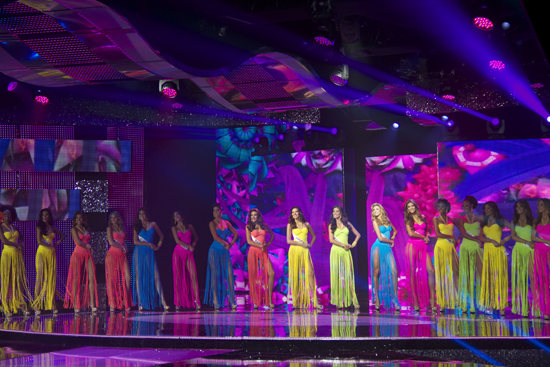LD Profile: Roberto Penso
Posted on December 11, 2012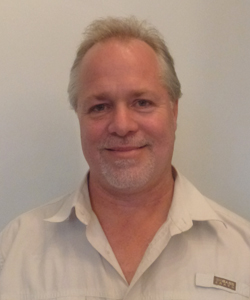 Six questions with Venezuelan Lighting Designer Roberto Penso, the artist behind the Miss Venezuela pageants from 2007 until now. Penso has worked with various artists from Venezuela and other countries, including Franco De Vita, Carlos Vives, Ricardo Montaner and many others.
Six questions with Venezuelan Lighting Designer Roberto Penso, the artist behind the Miss Venezuela pageants from 2007 until now. Penso has worked with various artists from Venezuela and other countries, including Franco De Vita, Carlos Vives, Ricardo Montaner and many others.
1. How did you get into this field?
I started my career in lighting by doing laser shows about 27 years ago. One day the managers of a famous singer called me to do a laser show for a tour, and I agreed to it with the condition to add lights to the lasers. I had studied lighting for theater, but I knew that I had to study more and really get into the lighting design. Also, photography and film have always been two of my passions, and they just went hand in hand with lighting.
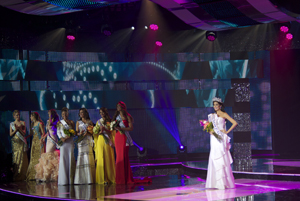 2. What do you think is the next big thing in the lighting industry?
2. What do you think is the next big thing in the lighting industry?
Without a doubt, the biggest developments in the lighting industry in the past 30 years have included the incorporation of automated fixtures, of digital controllers and now of LED technology (lights and displays). More recently I have noticed a great development in the hydraulic systems: everything moves, everything changes, and a good example here is Madonna’s MDNA Tour. As a comment related to these advancements, it would bring me great joy to see more professionals in Latin America willing to learn more and educate themselves in lighting design and in the appropriate use of the new technologies. It concerns me to see that any person who can record a cue on a console calls himself/herself a designer. The best fixtures and consoles cannot compensate for the lack of education among lighting designers, programmers and operators. For example, one big error of beginners and of many experienced professionals is the desire to bring a great number of effects in front of the audience and to light all of the fixtures at the same time, without focusing on the stage and on the artists, which is our main goal. I have seen so many shows with the same effects and with just a few cues during the entire show, which gave the impression that the show was designed by the console and not by the lighting designer.
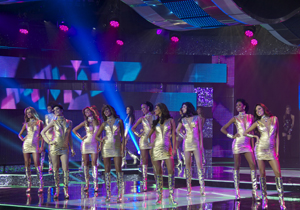 Some lighting designers don’t understand that the show is for the entertainment of the audience; they are paying for the show, and our lighting is an extension of what happens on stage, of the music and of the artists that perform on stage. Unfortunately, they end up creating the lighting design for themselves, without taking into consideration the different angles, the atmosphere, the factor of surprise, timing, etc. Basically, they show you everything in the first 5 minutes. Each person in the audience wants to see an amazing show, no matter where they are seated. And the same happens with the audio and video elements. Speaking of technology, I would like to see better LED fixtures, but we need to learn how to use them. They are much more than lights with pretty colors: they consume very little, and last for a long time; it’s enough to light a person in the front with an LED light to realize there is still a long road to go. It seems like there isn’t enough creativity these days. Almost all TV shows have the same look and all the lights are on at the same time. Most rely too much on the console to do all the work.
Some lighting designers don’t understand that the show is for the entertainment of the audience; they are paying for the show, and our lighting is an extension of what happens on stage, of the music and of the artists that perform on stage. Unfortunately, they end up creating the lighting design for themselves, without taking into consideration the different angles, the atmosphere, the factor of surprise, timing, etc. Basically, they show you everything in the first 5 minutes. Each person in the audience wants to see an amazing show, no matter where they are seated. And the same happens with the audio and video elements. Speaking of technology, I would like to see better LED fixtures, but we need to learn how to use them. They are much more than lights with pretty colors: they consume very little, and last for a long time; it’s enough to light a person in the front with an LED light to realize there is still a long road to go. It seems like there isn’t enough creativity these days. Almost all TV shows have the same look and all the lights are on at the same time. Most rely too much on the console to do all the work.
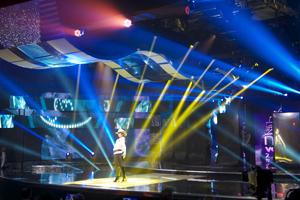 3. Do you have a favorite fixture (and why)?
3. Do you have a favorite fixture (and why)?
It depends on the role of the fixture, but my favorite one has always been the moving yoke from Vari-Lite VL5 (now VL-500), for its simplicity and unbeatable optical and color quality, next to the spot and profile fixtures VL-3015LT and Best Boy from PRG, which are my current favorites. I am a firm admirer of Jim Bornhorst, whose vision and talent inspired my career. I also enjoy each opportunity I have to work with the linear fixture from CHAUVET Professional COLORado Batten 72 Tour. Its amber LEDs allow me to add more saturation to my shows and offer a wide selection of colors and color temperature correction. Also, the Q-Wash 560-Z LED from CHAUVET Professional has proved indispensable in the Miss Venezuela pageant 2012, when I used 18 of them as washes. They performed incredibly well thanks to a great zoom and high index CRI, which allowed me an excellent color balance on a stage of low height and critical levels of color, where you have to light more ‘skin’ than anything else; but at the same time you need a stage rich in color and saturation because they record in high definition.
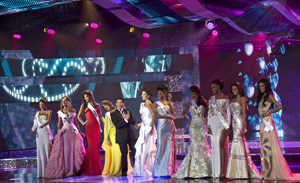 4. What has been your favorite design/project?
4. What has been your favorite design/project?
A classic is Pink Floyd’s “Pulse” and the tour of Genesis “Abacad,” where Vari-lite VL1 made its debut. I had the opportunity to go to one of its concert when they stopped in Philadelphia in 1981. But truly, I admire more the lighting designers than the actual shows: Marc Brickman, Peter Morse, Alan Owen, Patrick Woodrofe, Roy Bennett, Willie Williams and for TV, without a doubt Bob Dickingson, which are from the old school. Some of the artists I had the pleasure to collaborate with are Franco De Vita, Ricardo Montaner in particular, also many singers from Venezuela and Colombia and various from the United States. I have worked for 18 years with Ricardo, which I enjoyed very much, because his musical style allowed me to be more creative and theatrical. But Basically I have worked with all internationally acclaimed artists of Venezuela, also for a great number of festivals, concerts and special programs for DirecTV, HBO and other TV channels.
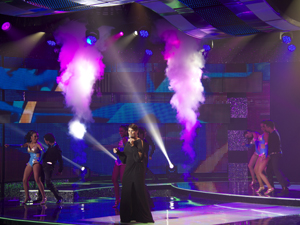 5. What was the biggest unforeseen obstacle that you’ve faced in one of your designs, and how did you overcome it?
5. What was the biggest unforeseen obstacle that you’ve faced in one of your designs, and how did you overcome it?
My biggest challenge has always been to convince the ‘producers’ that ‘Good, beautiful and cheap’ does not exist! Quality comes with a price. Many times I preferred making less money and transferring the difference into better lighting. It’s just like an artist who has a vision for a piece of art but doesn’t have the necessary tools, nor enough paint! These artists sometimes eat only bread and drink water so they can paint. On the personal side, the most difficult has been to overcome the stress that comes with waking up in the middle of a flight or in a hotel room without knowing what you are doing there or where you are going. I think this is something that all of us suffer, having to spend more time making shows than living a ‘normal’ life.
6. Complete this thought: A show without lights is like…
…melted ice cream. It has no shape, it’s not refreshing, it doesn’t make you want for more. But, ironically, nothing is worse than a show with too many lights! In reality, if you have a good reason to light something, one single fixture is enough to give meaning to everything.
